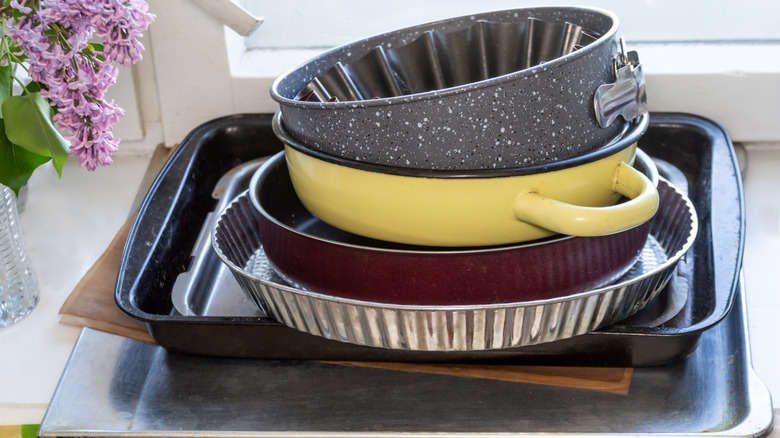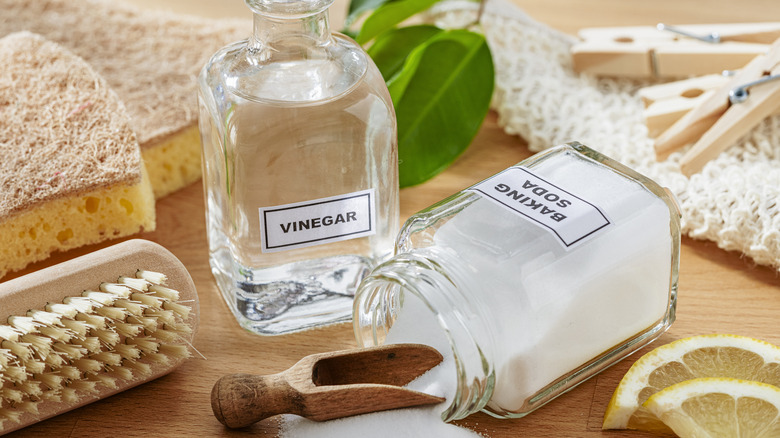Keep Baking Pans Sparkling Clean With 2 Pantry Essentials
Baking can be an extremely therapeutic process. Concentrating, measuring, and mixing is hard work, but the reward of something delicious makes the effort worthwhile. Yet, sometimes the clean-up process is so time-consuming that the benefit feels lost. That's why the Food Republic team spoke with Sofia Martinez, founder and CEO of Sparkly Maid Austin, to talk about how baking soda and vinegar are the key to effortlessly keeping baking pans clean.
Baking soda alone is a powerful substance. You can soak fruits and vegetables in baking soda to get rid of pesticides, or even use it to put out grease fires in the kitchen. And when it comes to baking, adding just a splash of vinegar to your cake batter or bread dough can greatly improve its texture.
But combining vinegar and baking soda is what Martinez calls "the world's greatest cleaning duo." She explains, "Vinegar is the grease cutter. It breaks down the oil and softens [stuck-on] grime. Baking soda is the muscle. It adds mild scrubbing power and helps lift everything up, all while not scratching your pan."
The chemistry behind this combo
This isn't just a cleaning hack — it's a chemistry lesson. Baking soda's official name is sodium bicarbonate, and it is what scientists consider a base. Vinegar's chemical name is dilute acetic acid, and as the name suggests, it is an acid.
When you combine a base and an acid together, you get a chemical reaction — and even though that sounds scary, it's exactly what you want for cleaning. In the case of baking soda and vinegar, that "bubbling reaction ... pushes residue off the surface," Sofia Martinez explains. "That fizzing action is like a mini lifting agent doing all the work for you. It loosens food that is stuck where you can simply wipe it off, without using force."
While this chemical reaction also works to unclog drains and dislodge dirt and grime in tiles, Martinez advises against using this combo on non-stick baking pans. "Mild abrasive material such as baking soda can slowly wear the nonstick layer and will affect how the pan functions over time," she notes. She also points out that the reaction of vinegar on bare aluminum can potentially cause discoloration.
Instead, Martinez suggests saving this mixture for glass and stainless steel pans, noting it's effective for tackling cooked-on messes without harming their surfaces. Her final recommendation for this hack? "Whatever the material, rinse and dry well after cleaning."


